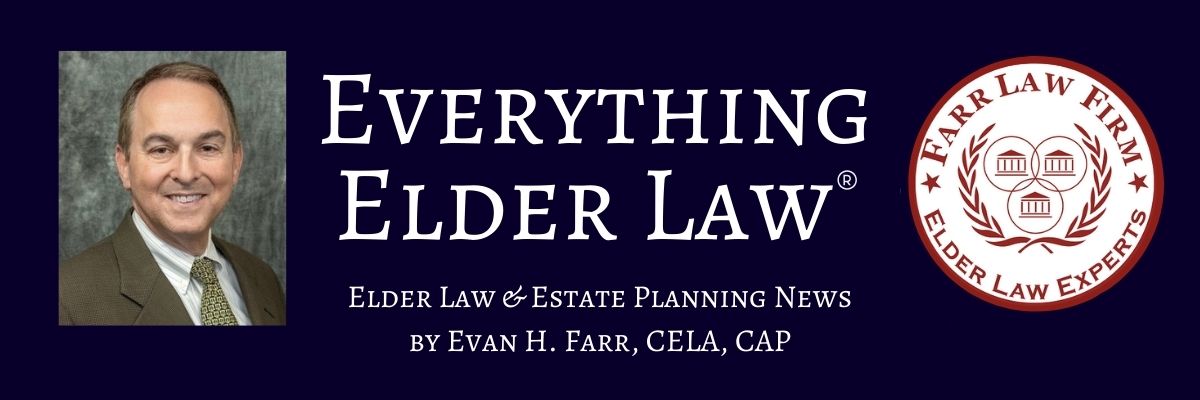 Q. I heard that the Setting Every Community Up for Retirement Enhancement (SECURE) Act was recently signed into law and that it includes taxpayer-friendly measures designed to boost retirement savings. What are some of the ways the SECURE Act affects retirement savings?
Q. I heard that the Setting Every Community Up for Retirement Enhancement (SECURE) Act was recently signed into law and that it includes taxpayer-friendly measures designed to boost retirement savings. What are some of the ways the SECURE Act affects retirement savings?
A. Currently, 25% of working Americans have no retirement savings at all– including 13% of workers age 60 and older. Something needs to change. Hopefully, the new Setting Every Community Up for Retirement Enhancement (SECURE) Act will help facilitate change when it comes to retirement savings by easing tax implications.
On December 20, 2019, President Trump signed the SECURE Act. This new law does several things that will affect your ability to save money for retirement and influence how you use the funds over time. As you mentioned, most (but definitely not all) of the changes are taxpayer-friendly measures designed to boost retirement savings. In fact, the SECURE Act as a whole is expected to generate $16.4 billion in tax revenue over the next 10 years.
These are some of the most notable ways the SECURE Act affects your retirement savings. (Unless otherwise noted, all changes apply starting in 2020.)
1. Required Minimum Distribution (RMD) age is raised: The law pushes the age at which you need to start withdrawing money from your traditional retirement accounts to age 72 from age 70½. The 70½ age was based on life expectancies in the early 1960s and had not been updated since then, until now. These are some of the repercussions of this change:
a. Your retirement savings has grown tax-free for decades. Once you withdraw, you need to pay taxes on it. The raising of the RMD defers when you need to start withdrawing and paying taxes.
b. Many retirees need the money from their retirement accounts to live on, so they’re already withdrawing a portion and paying taxes on it before the government requires them to do so. But those who don’t need the money and aren’t yet 70½ will now have more time before that requirement kicks in.
c. Americans who turned 70½ years old in 2019 will still need to withdraw their required minimum distributions this year. Failure to do so results in a 50% penalty of their RMD. The first withdrawal doesn’t need to be made until the following April 1, which means people who turned 70½ in 2019 can wait to withdraw their RMD until April 1, 2020. These people will then have to take another RMD by the following Dec. 31, and every Dec. 31 thereafter.
d. Those who turn 70½ on or after Jan. 1, 2020, are subject to the new rules and will have an extra year and a half before they need to start withdrawals.
2. You Can Contribute to Your Traditional IRA After Age 70½: The law allows you to contribute to your traditional IRA in the year you turn 70½ and beyond, provided you have earned income.
a. This has been prohibited in the past (although there’s no age cap on contributing to a Roth IRA).
b. More baby boomers are working past the traditional retirement age of 65, so it makes sense to allow them to continue to save in their traditional IRA to enjoy the tax deduction and shore up some retirement savings for years to come.
3. Your Beneficiaries Will Have to Pay Taxes on Inherited IRAs Sooner: The law eliminates the “stretch IRA,” an estate planning method that allows IRA beneficiaries to stretch their distributions from their inherited account — and the required tax payments on them — based on their life expectancy.
a. The SECURE Act requires beneficiaries to withdraw all assets from an inherited account within 10 years. There are no required minimum distributions within those 10 years, but the entire balance must be distributed by the 10th year. Previously, if you named your grandchild as your beneficiary, for example, most of your account could have stayed invested for decades past your death, and your grandchild could continue to reap the potential benefits of tax deferral. But under the new law, most beneficiaries will have to withdraw all the distributions from their inherited account and pay taxes on it within the 10 years.
b. As a practical matter, this change does affect most of our clients, as most of our clients over the years have elected to have their retirement account proceeds pay into their living trust, which acts as a conduit trust wherein the trustee takes out all required minimum distributions (RMDs) from the IRA and distributes those RMDs to the trust beneficiaries immediately so that the designated beneficiaries of the trust can take advantage of the stretch-out available under the old law.
Under the new law, many clients may wish to opt for new trust language which allows the trustee to take RMDs from the IRA and hold them in an accumulation trust which will act as an asset protection trust for their beneficiaries upon your death. The decision on whether to do this is quite complicated, and will be the subject of a future article. In the meantime, past or current clients should be watching their inbox very closely and paying attention to the next article on this topic, because you may want to come in to modify your trust. For clients who are members of our Lifetime Protection Plan® there will be no charge for any updates to your trust.
c. This change, however, can be potentially problematic for some IRA beneficiaries, such as those in their 40s and 50s and at the peak of their earning years. Limiting the time frame in which such a beneficiary can take distributions from an inherited IRA account means potentially boosting the tax burden those distributions will cause.
d. Exceptions are made for certain beneficiaries, including spouses and the chronically ill or disabled.
e. This provision is not retroactive and will not affect those who have already inherited an IRA. It will apply to those who inherit them starting on January 1, 2020, and may affect the estate planning of those planning to pass on an IRA directly to a non-spouse.
f. The elimination of the stretch IRA alone has the potential to generate about $15.7 billion in tax revenue over the next decade, according to the Congressional Research Service.
4. The SECURE Act requires 401(k) plan administrators to provide annual “lifetime income disclosure statements” to plan participants: Knowing how much you have in your 401(k) account is one thing. Knowing how long the money is going to last is another. Currently, 401(k) plan statements provide an account balance, but that really doesn’t tell you how much money you can expect to receive each month once you retire.
a. Lifetime Income Disclosure Statements will show how much money you could get each month if your total 401(k) account balance were used to purchase an annuity.
b. The new disclosure statements aren’t required until one year after the IRS issues interim final rules, creates a model disclosure statement, or releases assumptions that plan administrators can use to convert account balances into annuity equivalents, whichever is latest.
c. The goal of the new form is to help savers gain a better understanding of what their monthly income might look like when they stop working.
5. The new retirement law also makes it easier for 401(k) plan sponsors to offer annuities and other “lifetime income” options to plan participants by taking away some of the associated legal risks.
Revisions to Estate Planning Documents
The SECURE Act may have a significant impact on some estate and retirement plans.
• Current clients who are members of our Lifetime Protection Plan® and others who have IRAs that do not name as beneficiary a trust with beneficiary asset protection provisions (usually because they wanted their beneficiaries to be able to use the now defunct stretch-out option), should now consider adding beneficiary asset protection provisions to their trust if they don’t already have them, and should consider naming their trust as the beneficiary of their IRAs. This way their children will inherit IRA distributions inside an asset protection trust, protected from lawsuits, divorce, bankruptcy, medical bills, nursing home bills, etc.
• Current clients who are members of our Lifetime Protection Plan® and others who have IRAs should also review their IRA and plan beneficiary designations forms with us, as the decisions for many might be complicated.
Have you planned for your future and for your loved ones?
With these and other changes in the law, the need to plan in advance and to make necessary updates remains. If you have not done your Estate Planning or Retirement Planning or had your Planning documents and Retirement Plan reviewed in the past several years, please don’t hesitate to call us as soon as possible for an initial consultation, or a free annual review for members of our Lifetime Protection Plan®:
Estate Planning Fairfax: 703-691-1888
Estate Planning Fredericksburg: 540-479-1435
Estate Planning Rockville: 301-519-8041
Estate Planning DC: 202-587-2797
















Leave a comment
You must be logged in to post a comment.